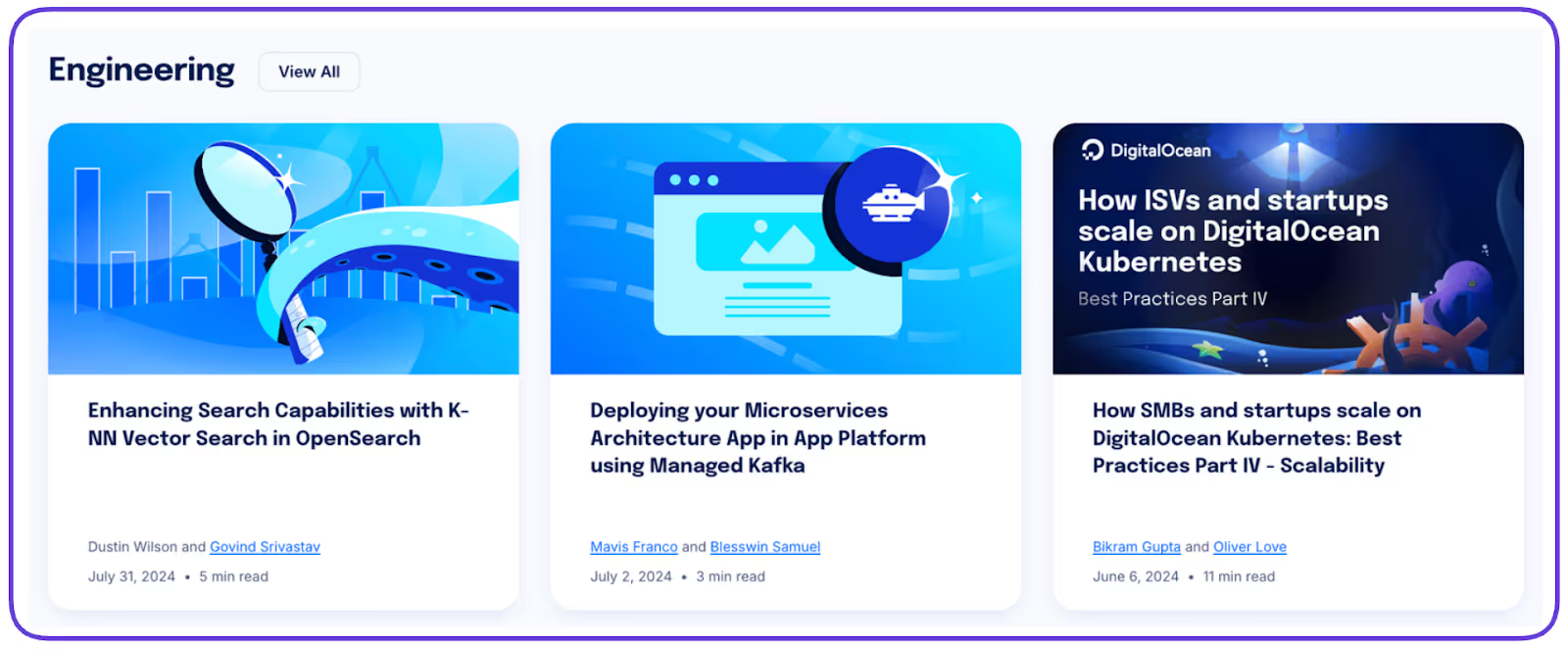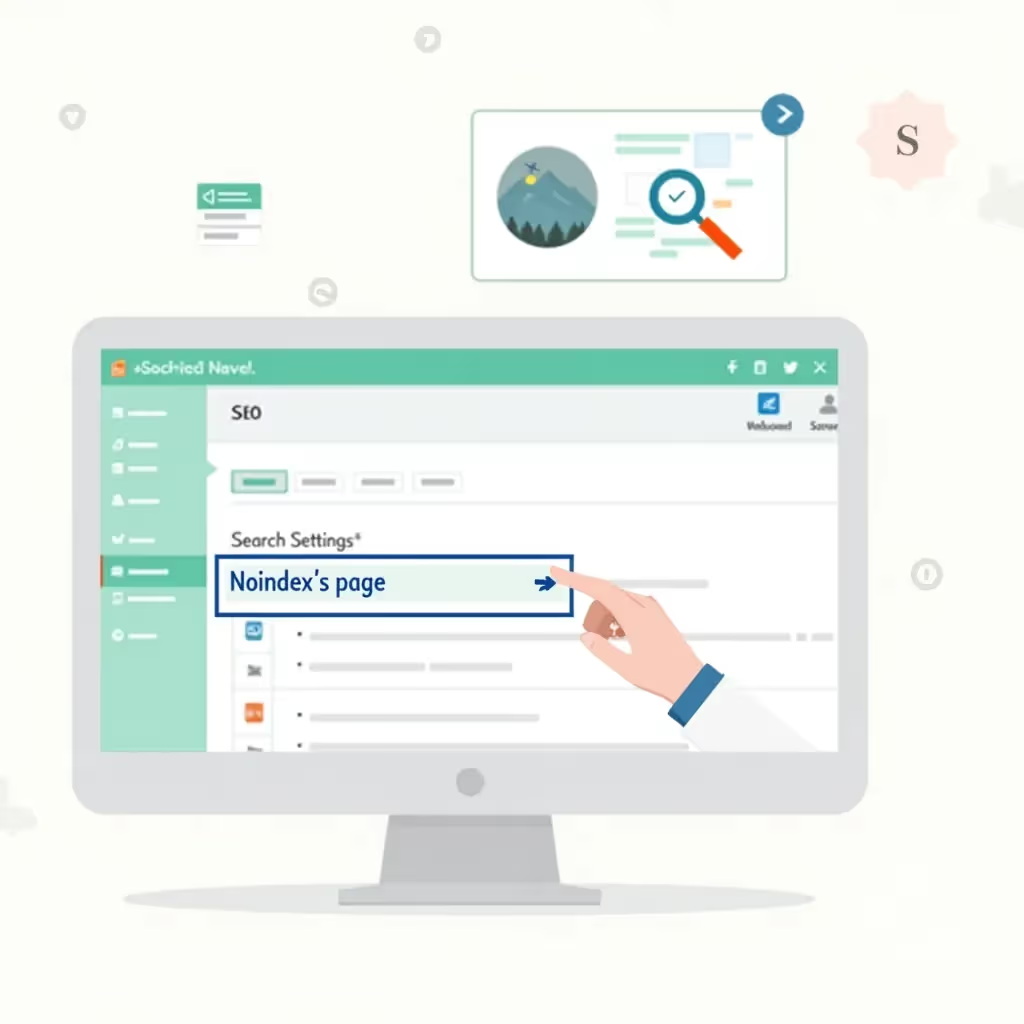A blog post is a piece of writing shared online, usually on a personal or company website. It can cover any topic, from personal experiences to professional advice and elaborate guides, and can vary in length. The main difference between a blog post and a static webpage is that blog posts are updated regularly and form part of a wider content strategy that readers can explore at their own pace.
Adding more blog posts to your website is an excellent way to connect with your audience. By consistently offering valuable blog content, you attract readers who are genuinely interested in what you have to say. Over time, a successful blog can open doors to new opportunities, like partnerships with other businesses, speaking engagements, and more customers.
7 Different Formats for a Blog Post With Examples
Blog posts come in different shapes and sizes. Consider how readers can best consume your content if you’re sharing food recipes, small business tips, or travel stories. Here are some popular blog post formats and examples of what they look like in action.
1. How-Tos
A how-to blog post is content that provides step-by-step instructions on how to accomplish a specific task or achieve a particular goal. It’s designed to teach readers a new skill, solve a problem, or guide them through a process.
How-to posts tend to follow this blog post template:
- A clear, specific title that indicates what the reader will learn
- A brief introduction explaining the main problem or task
- A list of tools, materials, or pre-requisites to get started
- Step-by-step instructions are broken down into clear, manageable steps
- A summary of what was learned
- A call to action inviting readers to take action or share their results
An Example of a How-to Post

The post How to Turn One-Time Shoppers Into Subscription Customers by Omnisend works well as a how-to post because:
- It covers a very specific topic
- It includes a table of contents for easy navigation
- It includes screenshots and real-world examples to illustrate key points
- It offers readers practical tips so they can get started straight away
2. “What is” and “What Are” Posts
“What is” and “What are” blog posts aim to break down a concept, going beyond a basic definition and expanding to include why the concept is important and how it works. They typically provide clear, comprehensive explanations of a particular topic and follow a similar structure:
- A title that clearly states the topic
- A brief introduction to the topic and its relevance
- A short definition of the topic or concept
- A more detailed explanation of the topic with added information
- Examples of applications of the concept
- The importance or impact of the topic and why it matters
- A summary of the key points
An Example of a What Is Post

The post What Is Dropshipping and How Does It Work? by Shopify is a great example of a “what is” blog post because:
- It explains the concept briefly at the start and then dives deeper later in the post
- It incorporates videos for further explanation
- It answers common questions readers might have
- It highlights use cases and segments of readers that could benefit from dropshipping
3. Ultimate Guides
An ultimate guide blog post is a comprehensive, in-depth article that aims to be the definitive resource on a particular topic. It’s designed to cover all aspects of the subject and often becomes the pillar post in a pillar post strategy. Publishers can then create shorter, more focused articles on the topics covered in the ultimate guide.
Here’s how an ultimate guide-style blog post is typically structured:
- A title including some variation of “The Ultimate Guide to…”
- An introduction explaining the importance of the topic and what the guide will cover
- Some background or context to the topic and why it matters
- The main body of the blog is divided into major subtopics that go into significant detail
- Real-world examples or case studies
- Actionable advice or steps so readers can get started
- Common questions or challenges, including obstacles and how to overcome them
Often, ultimate guides will incorporate quotes from industry experts, a list of additional resources, and a table of contents for easy navigation. As these posts tend to reach 1,500+ words, it’s worth breaking them up with images, infographics, and videos to support key points.
An Example of an Ultimate Guide

The blog post How to Journal | The Ultimate Guide by Your Visual Journal is a great example of an ultimate guide post because:
- It’s incredibly comprehensive—much longer than most blog posts
- It includes the tools readers need to get started
- It covers different use cases for journaling with step-by-step instructions
- It includes illustrations and charts to break up the text
4. Listicles
A listicle blog post presents information in a list-based structure. It’s designed to be easily scannable and digestible—ideal for readers who want quick, organized information. Listicles can cover a wide range of topics, from serious to lighthearted, and often highlight tips, tricks, examples, or ideas within a specific theme (a bit like this blog post).
The key to a successful listicle is to add value to each list item while keeping the overall structure easy to scan.
Here’s how a listicle is usually structured:
- A title that generally includes a number (e.g. “10 Ways to Improve Your Productivity”)
- An introduction explaining the topic and its relevance
- A list of items where each item is a separate section, often with its own subheading
- A conclusion summarizing the key points and takeaways
Many listicles include images, GIFs, and infographics to illustrate each item, a table of contents so readers can jump to relevant sections, and internal links to related content to explore subtopics further.
Example of a Listicle Blog Post

Bobby Berk’s blog post 12 Ways To Be More Productive – And Regain Your Focus is the perfect example of a listicle because:
- It separates each subheading with a scannable structure
- It provides context behind each entry with practical tips and applications
- Each listicle item works as a standalone section
5. Checklists
A checklist blog post is practical, action-oriented content offering a series of steps or items to complete or consider. In most cases, this blog post guides readers through a process or helps them prepare for a specific task or event—e.g. Setting up an Instagram profile or preparing for their next expo.
An effective checklist blog post is comprehensive yet concise. Each item should be necessary and, if appropriate, lead readers to the result chronologically.
Here’s a typical structure for a checklist blog post:
- A title that clearly states the purpose of the checklist (e.g. “The Ultimate Moving Day Checklist”)
- An introduction that explains the importance of the checklist and how to use it
- A checklist, usually presented in a numbered or bullet point format and grouped into categories or stages
- Extra explanations are tips for each item if necessary
- A conclusion that encourages readers to use or customize the checklist
It’s common for checklist blog posts to offer a downloadable or printable version of the checklist for readers who want a hard copy.
Example of a Checklist Blog Post

The post Social Media Launch Checklist: Instagram Edition by Altos is a great example of a checklist because:
- It groups checklist items in chronological order
- It includes detailed information about how readers can complete each checklist item
- It offers readers a downloadable version of the checklist
6. Reviews
Review blog posts evaluate a product, service, or experience to help readers make decisions.
There are two ways to approach a review: objectively and subjectively. Some readers want to hear the real experience of a person they admire, in which case a subjective review is best. Other times, readers simply want an unbiased review of the good and the bad. These blog posts often balance technical details with practical insights to target readers with different needs.
Here’s how to structure a typical review blog post:
- A title that clearly states what’s being reviewed (e.g. “Review: The Latest iPhone Model”)
- An introduction introducing the item, product, or service with a bit of context about why it matters
- An overview of the product or service, describing key features and specifications
- An outline of the evaluation criteria
- A detailed review breaking down the evaluation into sections and providing an in-depth analysis of each aspect
- A list of pros and cons
- The reviewer’s personal experience with the product or service
- A section comparing the item or service to similar products in the market
- A verdict or conclusion summarizing the key points and providing a final recommendation
Some review blog posts adopt a scoring system that might include a rating out of 10 or a percentage score. Including photos, videos, and infographics to illustrate key points is good practice.
Example of a Review Blog Post

This Podia review by Blogging Wizard is a fine example of a review blog post:
- It’s very detailed
- It includes screenshots and illustrations of each feature
- It shows readers how to get started with Podia
- It spotlights the core features and pricing in detail
- There’s a substantial list of pros and cons
- It offers alternatives and a detailed verdict
7. Comparisons
Comparison blog posts evaluate two or more similar products, services, or concepts side-by-side to help readers make informed decisions. They aim to be objective and comprehensive, giving readers a clear understanding of how the subjects stack up against each other, but you’ll often find companies write comparison posts to highlight their own products favorably. Ultimately, the purpose should be to help readers make the best choice for their specific needs and preferences.
Here’s how comparison blog posts are usually structured:
- A title clearly stating what’s being compared (e.g. “iPhone vs. Samsung Galaxy: Which is Right for You?”)
- An introduction explaining the purpose of the comparison and summarizing the items being compared
- An insight into the comparison criteria and why it’s important
- A side-by-side comparison broken down into sections
- A detailed analysis providing an in-depth comparison of each criterion and highlighting similarities and differences
- A price comparison
- The overall verdict and conclusion
Depending on your comparison, you might also want to include tables or charts for easy visual comparison, performance data or tests, and quotes and testimonials from previous customers.
Example of a Comparison Blog Post

This comparison of Beehiiv and Substack on the EmailToolTester blog is great because:
- It provides a summary of each tool upfront
- It includes screenshots to illustrate each feature
- It uses a scoring system to pit the tools against each other
- It includes a lengthy verdict and a call to action for readers to try each tool
5 Awesome Blogs to Use for Inspiration
From personal blogs to blogs with a highly niche target audience, here’s a roundup of popular blogs you can use to inspire your content marketing.
1. Positional’s Blog

We couldn’t not include our blog here. With lots of how-tos and “what is” posts, the Positional blog is a comprehensive resource for SEO folk at all stages. Each piece details one concept in detail, including graphics, in-depth tutorials, step-by-step guides, and real-world examples.
2. Monday.com’s Blog

Monday.com’s blog is a goldmine for product management professionals. Its extensive comparison posts and roundups help readers decide which tools and methods are best for them.
3. Digital Ocean’s Blog

Digital Ocean’s blog offers a ton of high-level content for digital engineers and developers. Its tutorials hone in on one specific technique and offer incredibly detailed step-by-step guides. Each piece also includes helpful illustrations and screenshots so readers can see complex concepts in action.
4. Levels’s Blog

Nutrition and health blog, Levels, publishes a huge variety of content types to help readers make healthy decisions. There are lots of “What is” posts, how-to posts, and listicles, and each piece includes lots of detail, an easily navigable structure, and helpful graphics.
5. The Pioneer Woman Blog

The Pioneer Woman blog is a lifestyle blog that covers everything from home DIY and gardening to recipe blogs and opinion pieces. There are lots of listicles that link out to tutorials and further reading, as well as how-tos with practical tips and examples.
What Makes a Successful Blog Post?
- Create a content outline first. Start with a high-level structure of your article, list the main topics and subtopics you want to cover, and arrange each point in a logical flow. Include placeholders for examples or data you’ll need.
- Determine which keywords you want to rank for. Use a keyword research tool to find relevant terms, but remember to consider search volume and competition. For best results, focus on long-tail keywords for niche topics and identify secondary keywords to complement your primary keywords.
- Optimize your article for SEO. Including the primary keyword in the H1, write good title tags and meta descriptions, and structure your content with H2, H3, and H4 header tags.
- Incorporate visuals and graphics. Use relevant images, infographics, or videos and optimize image alt text for SEO. Take it one step further by creating custom graphics to illustrate particularly complex points.
- If possible, gather expert quotes or insights. Contact industry experts for comments or consider conducting brief interviews for unique insights. Remember to use reputable sources for statistics and properly attribute all quotes and data.
- Write engaging intros. Start with a hook to grab attention, clearly state the article's purpose, and explain what readers will learn or gain.
- Incorporate first-hand experiences. Share personal anecdotes related to the topic by describing your own learning process and using “I” or “we” to create a connection with readers.
- Remember readability. Use short paragraphs and sentences, structure content with bullet points and lists, and include lots of white space for easy scanning.
- Incorporate CTAs naturally into the piece. Place calls-to-action at logical points in the content and use action-oriented language.
- Copy edit and polish your piece. Check for grammar and spelling errors, verify all facts and figures, and ensure the tone and style are consistent. You can read your piece aloud to catch awkward phrasing or have someone else review it.
Final Thoughts
Blog posts are versatile pieces of online content that can take many forms and serve different purposes. Each type has its own structure and best practices, but all aim to provide value to readers differently.
Choosing the right blog post format for your topic and audience. Whether you’re explaining a concept, providing step-by-step instructions, or comparing products, there’s a blog post format that can convey your message in the right way (and meet search intent).
Most successful blog posts combine informative content with an engaging structure and have an end goal in mind: help readers solve a problem? Help them make a decision? Provide them with new knowledge? By following the best practices laid out here and drawing inspiration from our outstanding blog examples, you too can create compelling blog posts that resonate with your audience and impact your wider content strategy.





